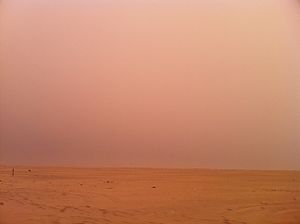In its article A Microsoft Horror Story: Newspaper Chain Is Switching 8,500 Employees To Google Apps Business Insider says "this isn't the case of a small business switching from some legacy email system to Gmail while maintaining a huge Microsoft contract for Office and other products. This is a big company that seems anxious to move all its employees away from Microsoft products completely.
"One story doesn't make a trend -- there were cases of businesses moving off Microsoft to Linux and OpenOffice in the last decade, too, but Microsoft continued to grow its sales every year. And Microsoft can point to some case studies where customers chose Microsoft's cloud services after testing Google's.... [but] even ONE story like this should be enough to make Steve Ballmer and company sweat."
Trinity Mirror's move to Google Apps started with Media Wales two months ago and is still being rolled out across the rest of the group but (even as a hardened Google user) I have to say it makes life much easier than the old IBM suite. Sharing docs, and calendars, using Google Groups and having (almost) unlimited storage space for emails has been great; apparently Google+ integration is also planned, which could have benefits in terms of using hangouts to boost - for example - in-house training.
It might not be a trend yet but look at what the Journal Register Company has achieved with the Ben Franklin Project publishing using purely free online tools and software.
Moving away from established brands to experiment with light-touch, third party apps is something that most publishers would have struggled to wrap their heads around a decade ago. Now, ownership can be seen as a tie - look how many media companies are renting press space with rivals - and the ready ability of newsrooms to adapt free social online tools for storytelling is only helping the culture shift.
Personally, I'd imagine Microsoft are looking at the way things are moving with some concern. Be interesting to see what it does to arrest the shift.
"One story doesn't make a trend -- there were cases of businesses moving off Microsoft to Linux and OpenOffice in the last decade, too, but Microsoft continued to grow its sales every year. And Microsoft can point to some case studies where customers chose Microsoft's cloud services after testing Google's.... [but] even ONE story like this should be enough to make Steve Ballmer and company sweat."
Trinity Mirror's move to Google Apps started with Media Wales two months ago and is still being rolled out across the rest of the group but (even as a hardened Google user) I have to say it makes life much easier than the old IBM suite. Sharing docs, and calendars, using Google Groups and having (almost) unlimited storage space for emails has been great; apparently Google+ integration is also planned, which could have benefits in terms of using hangouts to boost - for example - in-house training.
It might not be a trend yet but look at what the Journal Register Company has achieved with the Ben Franklin Project publishing using purely free online tools and software.
Moving away from established brands to experiment with light-touch, third party apps is something that most publishers would have struggled to wrap their heads around a decade ago. Now, ownership can be seen as a tie - look how many media companies are renting press space with rivals - and the ready ability of newsrooms to adapt free social online tools for storytelling is only helping the culture shift.
Personally, I'd imagine Microsoft are looking at the way things are moving with some concern. Be interesting to see what it does to arrest the shift.









